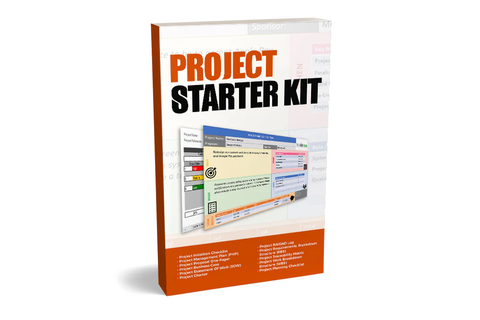Project Communication Plan | Guide to Communications Management Plan
Project Communication Plan
It is commonly accepted that a project manager spends up to 80% of his/her time communicating. Either by presenting at project meetings – ask me how many meetings should have been an email I have survived! – sending emails about the project, producing project reports, or simply providing a project update to the project sponsor by the coffee machine, project managers spend plenty of time
Communicating about and on the project. With so much time invested in communications, it is probably reasonable not to leave this aspect of the project to chance, don’t you agree? This is why a Project Communication Plan is so important.

Project Communication Plan
The project’s Communication Plan is a document that describes how the different stakeholder groups' communication requirements are going to be addressed by the project. In fact, it is the project stakeholders who make or break a project. Hence, ensuring that they receive appropriate communication from the project management team is key to keeping them engaged and up to date with the project's status and progress.
Such as other management plans that form the reference guide for the project, the Communication Management Plan is also where the project team can find out the primary information about Communications scheduled for the project. This Plan is the responsibility of the project manager and is completed during the Planning phase of the project, along with other plans such as the Stakeholder Engagement Plan.
Typical Sections In a Project Communication Plan Include
Communication Items:
Lists the key pieces of communication in the project, including their purpose and frequency; these should be addressed as any other configuration item in the project, subject to version control where applicable.
Communication Matrix:

Defines the authorized communication channels between stakeholder groups (e.g., who can talk directly to the supplier about the project). As the number of people involved in the project increases, so does the number of possible communication channels. Conversely, the complexity of these channels' management makes it challenging to separate between noise and real value-added conversations.
Project Meetings:
Outlines the key meetings planned for the project, including regular meetings (such as project board and project team meetings) and one-off sessions (such as the kick-off or closure meeting). Their purpose, chair, and participants involved Project Reporting: outlines the essential reports generated in the project, their purpose, ownership, and authorized distribution list.
Communication Processes Management:
Describes the key processes involved in managing communications in the project, including specialist roles identified for the project (e.g., communication specialist) and their involvement in these processes.
Communication Management Standards and Procedures:
Identifies any communication procedures to be followed by the project team. Should there be any corporate standards or guidelines on communication, these should be mentioned here, highlighting any tailoring applied to it to make them relevant for the project.
Communication Management Methods, Tools, and Techniques:

lists any specific methods, tools, and/or techniques whose use is advisable or required in the project. If the organization has an Intranet, a community of practice, or mandates specific corporate tools, these should be outlined in this section.
Regardless of the Communication Management Plan content, there is a golden rule of communication that should be followed: you should aim to share just enough information to the relevant stakeholders to perform their specific roles or satisfy their interests. Too much communication leads to spamming, and micromanagement and too little communication runs the risk of confusion and losing sight of the end goals. Therefore, finding the right balance and tailor the
contact with your interlocutor is the key to success.
Make no mistake: the major risk in project communication is the assumption that it took place. Thus,
don’t be afraid to spend some time planning your communication. After all, you will spend most of your time communicating with others!



